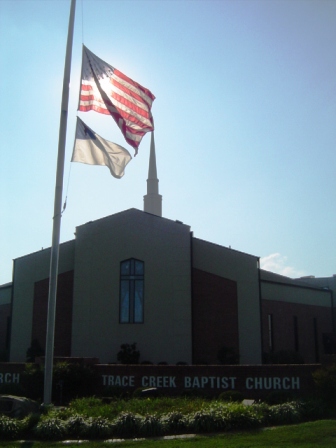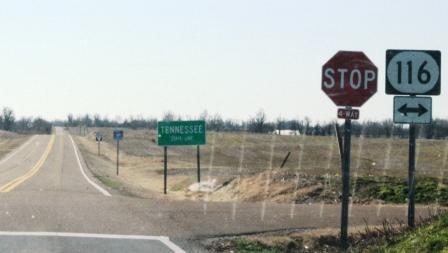Congress shall make no law respecting an establishment of religion, or prohibiting the free exercise thereof...(First 15 words of the First Amendment to the US Constitution)
Editor's Note: With the latest US Supreme Court decision announced on June 27, 2022, the wall crumbled more. Authority figures can now lead prayer in public schools.
What child can say them nay?
The Founding Fathers knew the history of their ancestors' flight from the one stop one size fits all religion of Britain. The first words of the First Amendment to the US Constitution made sure there would not be an equivalent of the Church of England in America.
Or so they thought.
Religion has always played a part in American life. There are between 150 and 160 million Americans who identify as Protestant. Seventy to seventy-five million identify as Roman Catholic. The two groups account for over half of Americans. Their influence extends beyond being half of the population. Days of prayer, governmental and military chaplains, religious influencers of presidents are such a standard part of the American landscape they are barely noted in passing. Presidents regularly attend funerals held in houses of worship. The nation has a national cathedral in Washington DC.
As the divide between left and right deepens, those with strong religious conviction become more stratified in their advocacy. Church leaders are choosing sides as they have not done so since the American Civil War. And each is convinced that heaven is on their side.
Nowhere in 21st century America is the wall between church and state thinner than in rural areas. Especially in the rural South.
Kentucky has approximately 5200 churches.
Of those 5400 churches, almost half, 2400, affiliate with the Southern Baptist Convention. Churches are THE primary social, entertainment, networking and youth program options in rural areas and small towns. While the Establishment Clause prevents government interference in religion and Free Exercise Clause prevents the government choosing a church, little can be done to prevent churches from exercising influence and dominance over rural governments.
Religious activism is no stranger to America. Churches have taken stands for and against slavery, minority rights and geographic expansionism. At times, national issues created congregation against congregation conflicts. American Methodists split over the Civil War into northern and southern contingents. The most famous civil rights family in American history, the Kings, got their start at Ebenezer Baptist Church in Atlanta. One of the first mass media stars, Father Charles Coughlin, preached antisemitism to millions on his radio program.
Religious issue advocacy has long been recognized as acceptable under the First Amendment. The invisible line was drawn at participation at elections. The electoral process was reserved for individuals and political parties.
Freedom from taxation has been the most visible way to keep government out of religious exercise. Churches do and say what they want (with some exceptions for extremes) as long as their political role was issue driven. That was enough for years. But no longer. Once the prospect of losing tax exempt status kept churches in their lanes. Now there exists little fear that the IRS will swoop in and strip a church of its protected status.
Once pastors limited their roles to salvation and modeling the role of the deity. Their political involvement was limited to urging the vote or praying for elected officials. In some areas, clergy serve as poll workers (as is their right as citizens), assisting voters, including their congregants, at the ballot box. For those who belong to a political party disapproved by one's spiritual leader, meeting him in the polling place is chilling. A quick review of religious programming reveals the thunder of preachers on the incompatibility of membership in the Democratic Party and Christianity.
Officials know that a word or a frown of a popular minister can lead to defeat
Local officials and aspirants to elected office know that a word or a frown of a popular minister can lead to electoral defeat. Membership in the "right" church is a necessity for success in politics and business. That too is not a new phenomenon, it is just starker in a rural area. Church affiliation in Kentucky is listed on the Legislative Research Commission website for each state senator and representative. It appears as important as the representative's day job, education and home county.
A majority of young people are not identifying themselves by religious affiliation. According to Pew Research, between 16-17% of adults 18-29 identify as either mainline or evangelical Christian. The largest group, 35%, list themselves as "unaffiliated or none". Overwhelmingly, young people believe in God. Only 3% report themselves to be atheists. In all categories but one, older adults are more attuned to religion than the young. The one difference 48%of young people report having a sense of wonder about the universe at least once a week. Religious Landscape Study - Pew Research
 Evangelical Christians, defined by the Cambridge Dictionary, as " belonging to one of the Protestant Churches or Christian groups that believes that the teaching of the Bible and persuading other people to join them is extremely important are now the largest religious group in America. Evangelical Christians, defined by the Cambridge Dictionary, as " belonging to one of the Protestant Churches or Christian groups that believes that the teaching of the Bible and persuading other people to join them is extremely important are now the largest religious group in America.
But statistics say the days are White Protestants dominating the political landscape are numbered.
"... Seniors are three times more likely than young Americans to claim a religious affiliation, for example. And white Christians are the minority in 19 states--a trend that will likely continue as more and more states slowly become majority minority.
"And those changes affect politics and policy, says Robert P. Jones, CEO of the nonpartisan PRRI. White evangelical Protestants and the unaffiliated, in particular, are two groups worth noting: "Those two are kind of the most weighty in terms of thinking about the political balance in the state," Religious States of America, Niraj Chokshi, Washington Post February 26, 2015
Is it any wonder that the intersection of church and state has become a crossroads without stop signs?
Cementing the ideals of religion into the fabric of American governance before the statistics come true goes a long way toward explaining the conservative movement to become integral parts of election and school boards, city and county governments and courts up to the Supreme Court.
Rural Kentucky has always been more conservative than the urban areas of Louisville and Lexington. There seems little reason to think that will change. If anything, urban areas, gerrymandered to share representatives with their country cousins will trend toward Republicans who have put themselves firmly in the camp of conservative Christianity.
Conservative think tanks have been as aware of the coming minority-majority trend for years. It can be surmised that think tanks put a plan into action to remain in power after the White majority of the Founding becomes the White minority of the 21st century. The division of left and right into camps has continued minority dominance of the social, economic and political landscape. The culmination of their plans was placing an unbeatable majority of the like minded on the US Supreme Court.
The progressive left never saw it coming.
While conservative politicians recruited religious support for their cause, liberals ignored them. Separation of church and state was inviolate they believed in their souls (those who believed in the soul). Lulled by demographics, progressives and politicians who align themselves with them are left to complain that "they aren't playing fair." It may not be too late to right the tilting ship of state but little time is left to do it. 
The separation of church and state is thin in rural areas and thinning in urban centers. Younger Americans will be faced with addressing the intersection of government and religion. They will have to figure out how to put up a stop sign to manage what their elders are leaving them. |


 Evangelical Christians, defined by the Cambridge Dictionary, as " belonging to one of the Protestant Churches or Christian groups that believes that the teaching of the Bible and persuading other people to join them is extremely important are now the largest religious group in America.
Evangelical Christians, defined by the Cambridge Dictionary, as " belonging to one of the Protestant Churches or Christian groups that believes that the teaching of the Bible and persuading other people to join them is extremely important are now the largest religious group in America.




